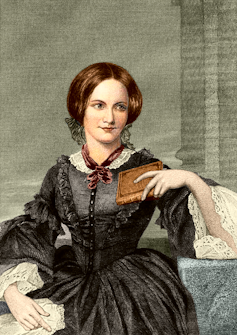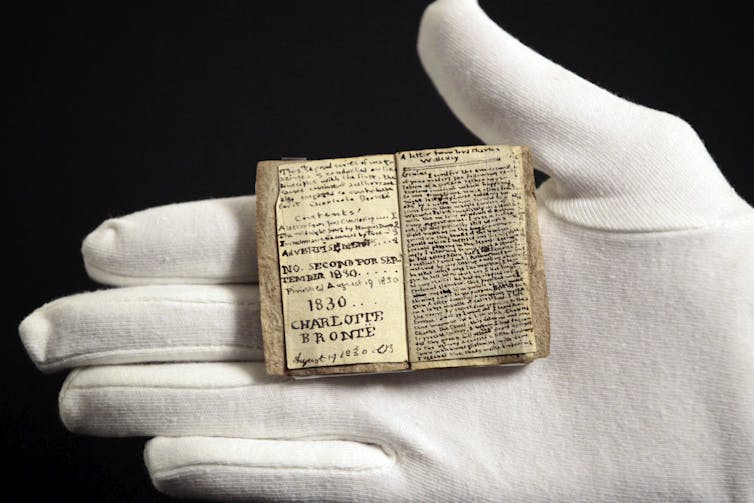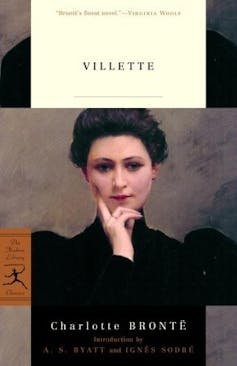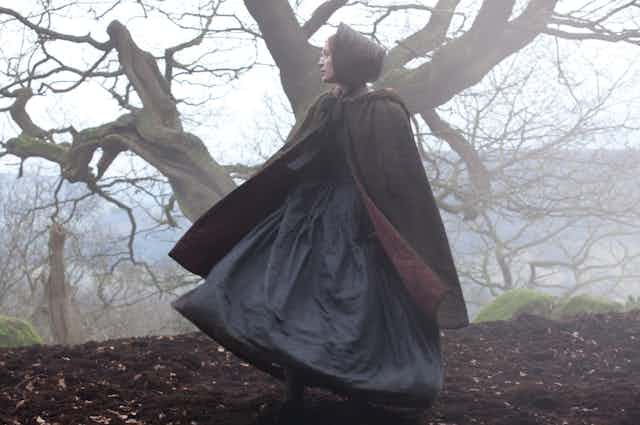What is it that makes generation after generation respond to Charlotte Brontë’s books, and in particular Jane Eyre?
Brontë’s novels are bildungsromane, but they differ markedly from, say, the coming of age novels of Jane Austen.

The education of the Austen heroine is a moral one, of a kind clearly mapped out for the reader. We know, through some very explicit signposting, that in order to move from the family home to marriage with “a single man in possession of a good fortune”, she must learn to temper sensibility with sense, or fight prejudice, or a tendency to meddle or be easily persuaded.
Brontë heroines, on the other hand, struggle with questions that are psychologically complex before they are ethical: how to refuse the temptation of a relationship where we are not truly loved; how to achieve respect without status; how to continue to care for the friend we envy.
The answers to such questions are not foreshadowed, and, scandalously for many of her first readers, they privilege principles of self-knowledge and self-expression over conventional Christian moralism.
Moreover, Brontë doesn’t give the impression that the eventual resolutions her heroines achieve are easily won, necessarily worth the sacrifice, or “universally acknowledged”.
As biographer and scholar Juliet Barker has noted,
All Charlotte’s heroines […] were orphans.
They are not beautiful or rich (typically they must work to support themselves), yet they assert their right to a beautiful and rich interior life.
“Do you think, because I am poor, obscure, plain and little, I am soulless and heartless? You think wrong!” Jane Eyre declares to Rochester.
Anyone, these books assure us, however little else they may have, can hold on to the integrity of their feelings. And they can seek to express them, with care and accuracy, in language.
Jane Eyre was Brontë’s first published novel, but not her first work of fiction. She and her equally precocious younger siblings Branwell, Emily and Anne, had been producing “little books” since Charlotte was 11. In The History of the Year, her second oldest surviving manuscript, written in March 1829, she tells:
Papa bought Branwell some soldiers at Leeds. When Papa came home it was night and we were in bed, so next morning Branwell came to our door with a box of soldiers. Emily and I jumped out of bed and I snatched up one and exclaimed, ‘This is the Duke of Wellington! It shall be mine’ When I said this, Emily likewise took one and said it should be hers. When Anne came down she took one also.
The toy soldiers were to initiate what the Brontë children referred to as “our plays”: extended games set in virtual worlds – Glass Town, Angria and Gondal – scripted in miniature books in minute handwriting.

The siblings went on writing these co-authored tales and poems until well into their twenties. They are notable not only for their early precocity of language but for their emergent, blatant eroticism. Their heroes are Byronic, and their heroines beautiful, wealthy and typically masochistic.
Although the Brontë sisters’ novels show traces of the romantic and gothic elements of these early experiments, “poor obscure, plain and little” Jane Eyre, and the cryptic, damaged and independent Lucy Snowe of Villette (1853) are a far cry from such creations.
Once she began writing novels, Charlotte drew on memory as well as imagination, and the sumptuous settings of Angria gave way to a recognisable world of sharply visualised, everyday images: the “torture of thrusting the swelled, raw and stiff toes into my shoes in the morning” in Jane Eyre; Tartar the mastiff “snuff[ing] fresh flowers” spilled on the floor in Shirley (1849); simple pieces of furniture swimming into vision as Lucy Snowe in Villette recovers from illness.

It’s these realist details, as well as the passionate struggles and feelings they anchor, that ensure that we hold Charlotte Brontë’s novels in mind long after we have closed their covers.
The Brontë sisters published their first poems and novels under pseudonyms – Currer, Ellis and Acton Bell. While a collection of their poems, published in 1846, sold only three copies, the mystery of their authorship became an issue after the runaway success of Jane Eyre, which came out in the following year.
Readers and reviewers speculated, not just about the gender of the authors, but also as to whether they were indeed three, or one or two writers.
So began the complex entanglement, which continues to this day, of critical appreciation of the Brontë novels with biographical speculation.
Jane Eyre’s experiences at Lowood reproduce Charlotte’s at Cowan Bridge School. Both Villette and The Professor (1857) draw on her time as first a student and then a teacher in the Pensionnat Heger in Brussels. And Shirley’s Shirley Keeldar and Caroline Helstone are revived portraits of Emily and Anne, both of whom died during the novel’s composition.
The temptation to multiply connections between art and life was given further impetus with the publication of Elizabeth Gaskell’s Life of Charlotte Brontë (1857) two years after Charlotte’s death, a work which attempted to curate Charlotte’s posthumous reputation and shield her from accusations of coarseness and lack of femininity.
Gaskell succeeded, however, in setting in place an enduring myth, of Charlotte Brontë the pious clergyman’s daughter from a sheltered Yorkshire village, whose scandalous depictions of female desire and outspokenness were the product of innocence rather than first hand experience.
It’s the thrill of each new reader, 200 years after her birth, to respond afresh to the startlingly modern psychology of her characters, the direct address of her first person narration and the sensuous immediacy of the 19th century world she so compellingly evokes.

